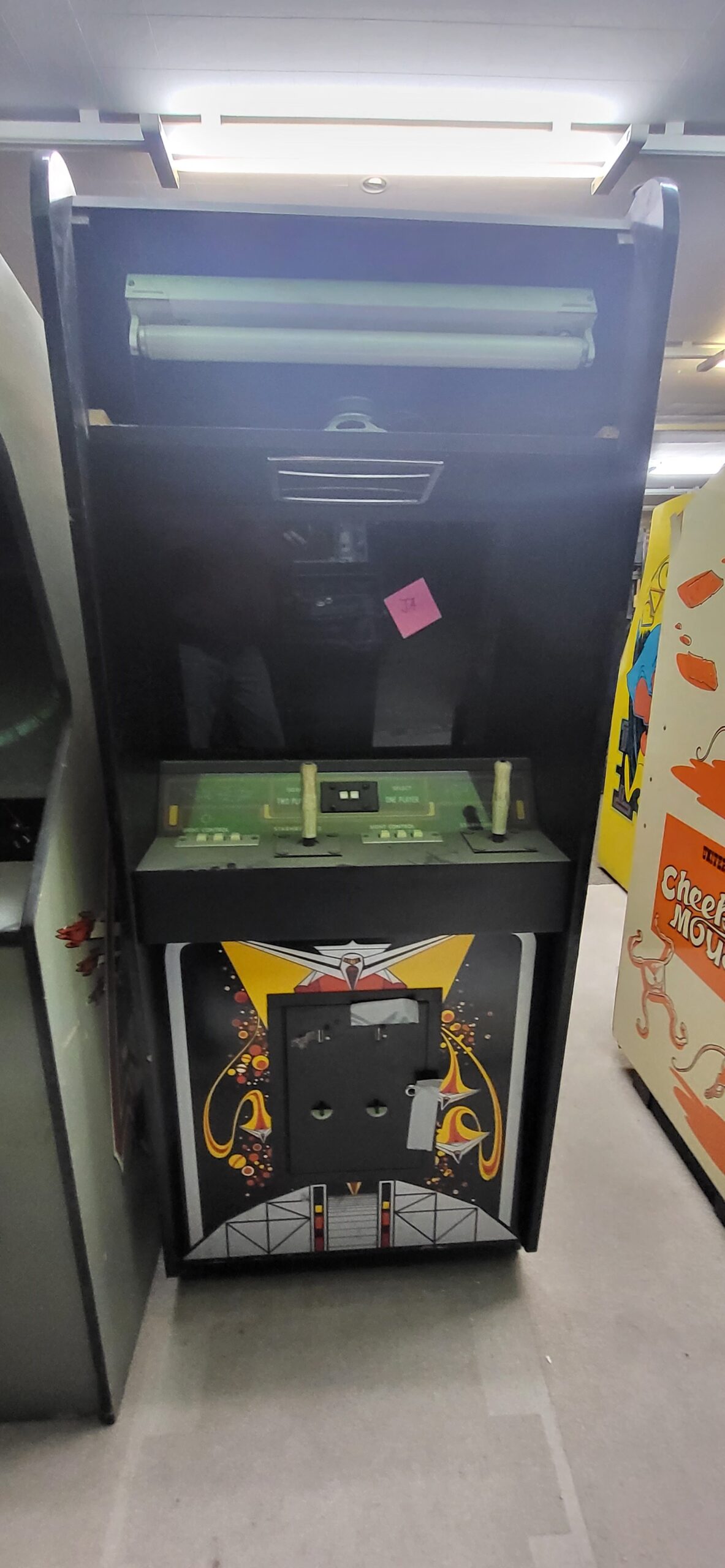
Starhawk
Arcade / Cinematronics 1977
Starhawk is a space-themed shooter arcade game developed and released by Cinematronics in 1977. It is notable for being one of the early video games to utilize vector graphics, which allowed for sharp and smooth line-based imagery that set it apart from the pixelated graphics common in games of its era. In Starhawk, players control a spaceship navigating through a starfield, engaging in dogfights against enemy spacecraft. The objective is to score points by destroying as many enemy ships as possible while avoiding collisions and incoming fire.
Starhawk was developed during a time when the arcade gaming industry was rapidly evolving. Cinematronics, a company known for pioneering the use of vector display technology in video games, sought to create an engaging and visually distinct experience. The development team, led by game designer Tim Skelly, drew inspiration from popular science fiction media and the nascent video game industry’s burgeoning technology. The result was a game that not only provided thrilling gameplay but also showcased the potential of vector graphics.
Upon its release, Starhawk received a positive reception for its innovative use of vector graphics and engaging gameplay. Arcade patrons were impressed by the game’s sleek visuals and the responsive controls of the player’s spaceship. While it may not have reached the legendary status of some of its contemporaries, Starhawk carved out a niche following and is remembered fondly by enthusiasts of classic arcade games. Its impact is noted in its contribution to the popularization of vector graphics in arcade gaming.
Starhawk remained a relatively standalone title, with no direct sequels or significant spin-offs. However, its use of vector graphics and space combat theme can be seen as an influence on later games. Cinematronics continued to explore vector graphics technology in subsequent releases, including titles like Tail Gunner and Star Castle, both of which also featured space combat themes and further developed the visual and gameplay mechanics introduced in Starhawk.
As with many arcade games from the late 1970s, original Starhawk machines are considered rare collectibles. It’s estimated that a few thousand units were produced, though the exact number is unclear. Due to its historical significance and the limited availability of functioning machines, a Starhawk arcade cabinet in good condition can fetch anywhere from $1,500 to $3,000 or more, depending on its state and completeness. Restored units or those with original parts intact are particularly sought after by collectors.
Starhawk’s hardware was typical of vector graphics games of its time, utilizing a monochrome vector display to render its sharp, line-based graphics. Below is a list of the key components and parts relevant for repairs:
Vector Monitor: A monochrome CRT display capable of drawing lines directly on the screen.
CPU: The game used a custom microprocessor setup common in Cinematronics’ vector games.
PCB (Printed Circuit Board): The main circuit board housing the game’s logic and processing components.
ROM Chips: Contain the game’s code and data.
Analog Vector Generator: Converts digital signals from the CPU into analog signals for the vector monitor.
Power Supply: Provides the necessary electrical power to the game’s components.
Control Panel: Includes the joystick and buttons used by the player to control the spaceship.
Audio Hardware: Generates the game’s sound effects.
Collectors and restorers often seek these specific components to maintain or bring back to life vintage Starhawk arcade machines. The rarity of some of these parts, especially the vector monitors and specific PCBs, contributes to the game’s overall value and the challenge of preserving it for future generations.


